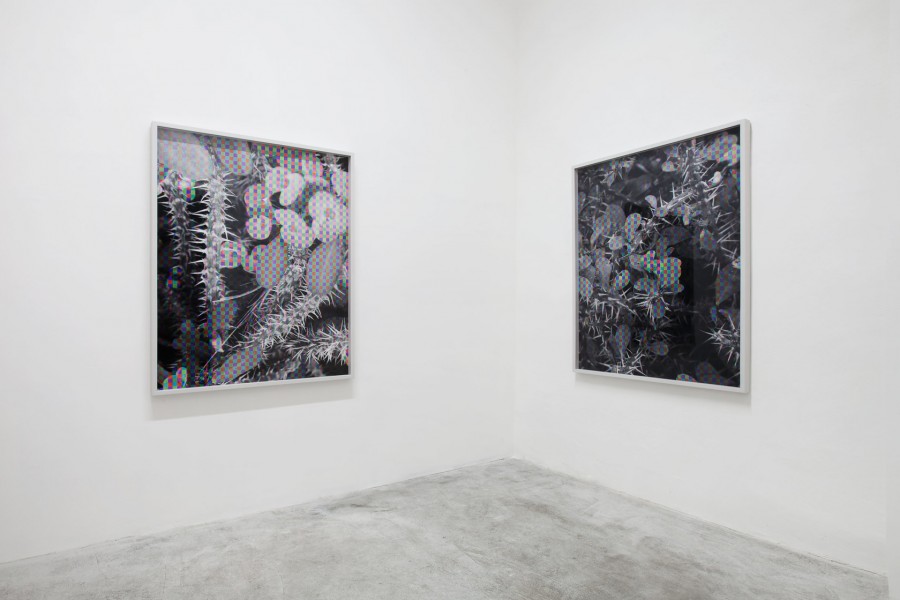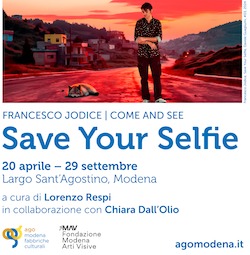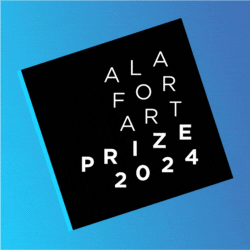[nemus_slider id=”59309″]
In occasion of his solo show Spiritual Door at VEDA (Florence, until 25 November 2016), ATPdiary asked some questions to Damon Zucconi.
ATP: Let’s start with the title, “Spiritual Door.” What does it hide? What is the relationship with the whole exhibition project?
Damon Zucconi: There’s this intuitive sense that vision is something that’s active and autonomous. One of the first theories about the way visual perception works was that rays of light emanated from one’s eyes; vision as disembodied—a “spiritual sight” that can “readily range.” Of course, it’s the inverse that’s true. But there remains the gap between what’s constructed in the mind’s eye and the photons that hit the back of the retina. What’s hidden is maybe what resides in that gap, and one way of looking at the title is that a “Spiritual Door” is a window.
ATP: In the introductory text for the show, you refer to the cardinal points as a metaphor for contemporary man: “For us, it is only with an intention that one can find themselves lost in any geographic sense.” Would you like to explain me this interest of yours in bearing systems?
DZ: My background is in sculpture and now, working within the informatic, dealing with the way orientation is codified is a natural extension of a spatial practice. How do objects relate to and construct the spaces they inhabit? This question is an old sculptural problem of course, but it’s given a new meaning and relevance due to the rise of surveillance capitalism and pervasive sensing.
ATP: Could you tell me more about the objective of taking note of the geographical position of the person who reads the text, and how does it work? Why did you decide to file the position of the readers?
DZ: There’s a custom analytics suite I’ve built that detects the position and orientation of mobile devices—this is information phones typically make available as a continuous signal. I silently sample and archive it to a server in the background of whatever you are viewing.
How can one use orientation itself as a material? Materials are made by taking some quantity in the world and bundling it up into a form that you have some control over. This archive of orientations is an aggregate of relationships that together form a kind of map. Of what? There is no objective.
ATP: Now I am quoting Borges too: did you find your center?
DZ: Averages are a kind of center. I discovered that the average orientation leans to the East ever so slightly—whether sensor bias or a broader tendency of people to face the Levant, I do not know.
ATP: Would you like to tell me briefly what we will see in the space of VEDA? What will you be exhibiting?
Most of Veda is a volume that can’t be entered but is visible from street level. The floor of the space was removed, so you peer down into what was once a basement. I’ve taken the lighting system and moved it from the ceiling to the floor, so the lights project upward from beneath the street. Sitting just below street level on the far wall are two olive wood crosses that have been truncated, a negative, to form two plus-signs, a positive.
I’ve outfitted the window with a transducer that turns the surface of the glass window into a speaker that harbors two voices who move backward through an archive. They translate compass headings into the names of the classical winds (spoken in an Italian-tinged lingua franca from the Middle Ages-era Mediterranean). In another room, one that is enterable, there are two prints of the so-called “crown of thorns” (Euphorbia milii) plant that were produced using an encoding technique I developed to hide the color of images in plain sight. They appear to you as simultaneously both in full color and greyscale, dependent on distance and focus. There is also a version of The New Testament that I’ve published, in both Italian and English, with every significant word misspelled. As well as a bottle of perfume (Calvin Klein’s Obsession) that’s been made black by mixing it with India Ink.
(Ha collaborato Martina Odorici)
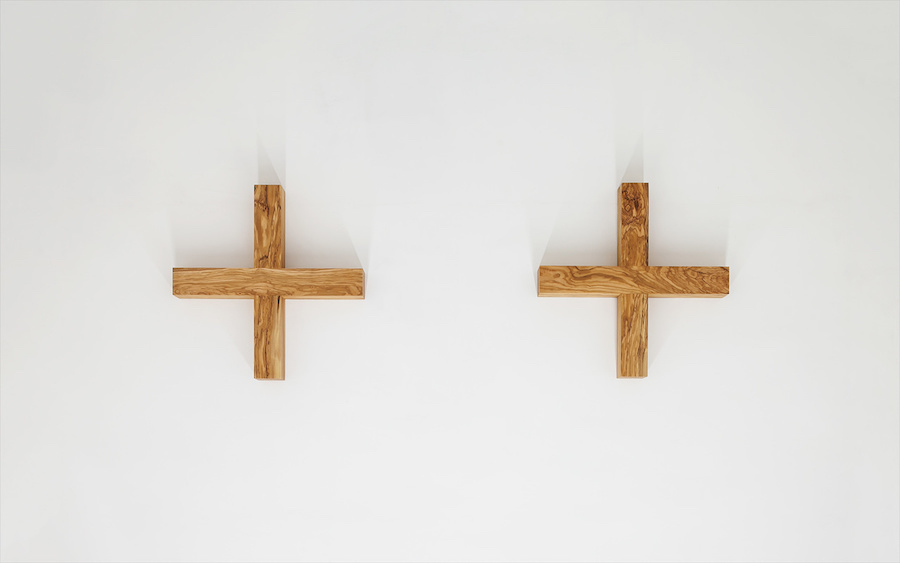
VEDA
Damon Zucconi — Spiritual Door
For much of history, humans made no distinction between the cardinal directions and the winds which blew from them. It is uncertain when or why our sense of geographic orientation became associated with the winds. It might have been farming populations, attentive to the rain and temperature for the cultivation of their crops, who noticed the qualitative differences in the winds—some humid, others dry, some hot, others cold—and that these qualities depended on from where the wind was blowing. Local directional names were used to refer to the winds, eventually giving each wind itself a proper name, regardless of the observer’s position. Sailors, far from landmarks at sea, nonetheless recognized a particular wind by its qualities and referred to it by a familiar name—Tramontana, Levante, Ostro, Ponente. 1
When traveling north the ring that signifies my marriage is on my western hand. When moving west, it sits on my southern. When south: eastern. When east: northern. There exist languages with no words for left and right, only one’s absolute relation to the world, necessitating that a speaker of these languages remain continuously oriented, lest they lose the ability to communicate basic facts.
For us, it is only with an intention that one can find themselves lost in any geographic sense. Our orientation isn’t a constant awareness necessitated by linguistic constraints, like that of a native speaker of Warlpiri or Wintu or Tzeltal, but rather, something outside of our immediate consciousness, mediated and on demand as a discrete technology. With orientation externalized in this manner, one can imagine it as a material that could be gathered and pooled.
If you are reading this with a mobile device that contains an embedded compass, your orientation is being sampled here, once per second—now a material archived in a database I control. Note the direction you now face. Is it different from when you began moving through this text, reading from le to right?
Of the generations of texts on earth / I will have read only a few— / the ones that I keep reading in my memory, / reading and transforming. / From South, East, West, and North / the paths converge that have led me / to my secret center. 2
Not all secrets are information someone is trying to conceal. Some secrets are information that’s in the world, but inaccessible.
1 https://en.wikipedia.org/wiki/Classical_compass_winds
2 Jorge Luis Borges, Elogio de la sombra, 1969; edizione italiana, Einaudi, 2007
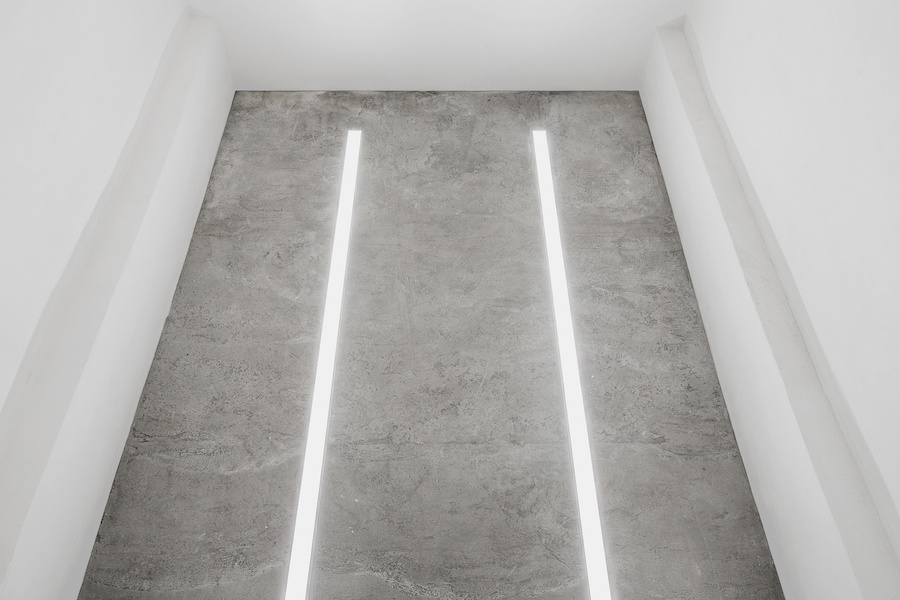
VEDA
Damon Zucconi — Spiritual Door
Per lungo tempo l’uomo non ha fatto alcuna distinzione tra i punti cardinali e i venti che da quelle direzioni spiravano. Non si sa con esattezza quando e perche? il nostro senso di orientamento geografico venne associato ai venti. Furono probabilmente le prime popolazioni agricole, attente alla pioggia e alla temperatura per la buona riuscita delle loro colture, a notarne le differenze qualitative – alcuni umidi, altri secchi, alcuni caldi, altri freddi – e che queste differenze dipendevano dalla direzione da cui so ava il vento. Nomi che indicavano i diversi punti dell’orizzonte cominciarono ad essere usati per riferirsi ai venti, anche assegnando a ciascuno di essi un nome proprio, che nulla aveva a che fare con la posizione dell’osservatore. I marinai quando si trovavano in mare, lontani da punti di riferimento stabili, erano comunque capaci di riconoscere un particolare vento dalle sue caratteristiche, e lo appellavano con un nome a loro familiare, Tramontana, Levante, Ostro, Ponente. 1
Quando viaggio verso nord, la mia fede nuziale si trova al dito della mano rivolta a occidente. Quando mi muovo verso ovest, sta a meridione. Quando vado a sud, a oriente. Quando mi sposto a est, a settentrione. Vi sono lingue che non hanno parole per destra e sinistra, ed e? soltanto la relazione continua e assoluta col mondo a fare in modo che chi parla queste lingue sia sempre orientato, perche? altrimenti esse perdono la capacita? di comunicare i fatti, gli eventi piu? elementari.
Cosi? e? anche per noi, solo grazie a uno scopo possiamo trovare noi stessi, smarriti in chissa? quale punto geografico Il fatto di essere orientati non e? una consapevolezza costante determinata da necessita? linguistiche come per i nativi warlpiri, wintu o tzeltal, piuttosto e? qualcosa che si situa all’esterno della nostra immediata coscienza, qualcosa di mediato, quasi su richiesta, come una tecnologia distinta da noi. In questo modo possiamo pensare all’orientamento come a un materiale suscettibile di essere raccolto, messo insieme.
Se stai leggendo questo foglio su uno smartphone dotato di bussola, il tuo orientamento verra? registrato una volta al secondo – materiale archiviato in un database di cui ho il controllo. Osserva la direzione verso cui sei rivolto adesso. E? cambiata da quando hai cominciato a muoverti attraverso il testo, leggendo da sinistra a destra?
Delle generazioni di testi che ci sono sulla terra/ne avro? letti solo alcuni/quelli che continuo a leggere nella memoria, /a leggere e a trasformare./Dal sud, dall’est, dall’ovest, dal nord/convergono i cammini che mi hanno portato nel mio segreto centro. 2
Non tutti i segreti sono informazioni che qualcuno vuole tenere celate. Alcuni segreti sono informazioni che stanno nel mondo, pero? inaccessibili. 1
1 https://it.wikipedia.org/wiki/Rosa_dei_venti_classica
2 Jorge Luis Borges, Elogio de la sombra, 1969; edizione italiana, Einaudi, 2007
